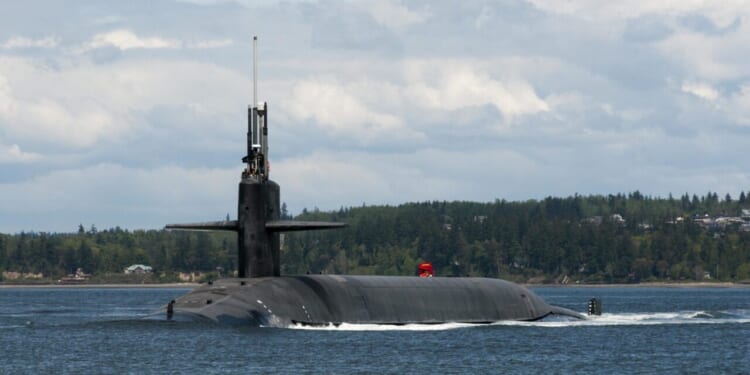The Trident II D5LE has an unclassified range of over 7,500 miles and can reach speeds of up to Mach 24.
Last week, a Navy ballistic missile submarine tested the US military’s nuclear deterrence capabilities by launching four unarmed Trident II D5LE ballistic missiles in the Atlantic Ocean.
The Trident II D5LE is a ballistic missile that can take conventional and nuclear warheads. Only the select few Navy submarines tasked with nuclear deterrence missions carry the munition.
Trident II D5LE Tests
The tests took place off the east coast of Florida from September 17-21. At least one launch took place at night and was visible from Puerto Rico.
The Navy was quick to mention that the flight tests were scheduled as part of a recurring program of training and assessment to ensure the continued reliability and accuracy of the Trident II D5LE and did not take place in response to any actions by US adversaries. (Russia has been provoking NATO forces in Eastern and Northern Europe repeatedly over the past two weeks.)
“Our Nation’s submarine launched ballistic missile system has been a critical component of our national security since the 1960s, and these launches continue to demonstrate the credibility and reliability of our strategic deterrence capabilities,” Vice Admiral Johnny Wolfe, director of the Navy’s Strategic Systems Programs, said in a press release.
The test flights were part of a long-term test flight event that has seen a total of 197 successful missile flight test launches of the Trident II D5 ballistic missile.
The Trident II D5LE has an unclassified range of over 7,500 miles and can reach speeds of up to Mach 24 (approximately 18,000 miles per hour).
In addition to the US Navy, the Royal Navy also uses the Trident II D5 ballistic missile on its nuclear-powered submarines.
Development on the D5 began in the 1980s. In 2017, the Navy completed a large-scale life-extension program to extend the service life of the munition well into the 2040s.
“For the dedicated SSP [Strategic Systems Programs] team, maintaining our current capability and actively demonstrating through flight testing that the system is ready to respond if called upon is central to ensuring our nation’s Peace through Strength. The team is also pushing ahead [with] developing the next generation strategic weapon system to ensure the sea-based deterrence capability of tomorrow,” Wolfe added.
The Navy’s Strategic Systems Programs is responsible for the Navy’s strategic weapons.
The Navy’s Nuclear Fleet
The Navy has 14 Ohio-class ballistic missile submarines equipped with Trident II D5LE ballistic missiles and nuclear warheads. Each sub can carry up to 24 ballistic missiles. These submarines are also nuclear-powered and can cruise indefinitely, restricted only by the amount of food and munitions they carry.
These vessels make up the maritime component of the US military’s nuclear triad. To ensure that the United States was not attacked by another nuclear power, the Pentagon created a nuclear triad with ground (intercontinental ballistic missiles), air (bombs, cruise missiles, and ballistic missiles), and maritime (submarine-launched ballistic missiles) components. The idea was that an adversary would not be able to take out all three components at the same time, and at least one component would respond in the event of an attack, thus assuring mutual destruction.
About the Author: Stavros Atlamazoglou
Stavros Atlamazoglou is a seasoned defense journalist specializing in special operations and a Hellenic Army veteran (national service with the 575th Marine Battalion and Army HQ). He holds a BA from the Johns Hopkins University and an MA from the Johns Hopkins’ School of Advanced International Studies (SAIS). His work has been featured in Business Insider, Sandboxx, and SOFREP.
Image: Wikimedia Commons.


















